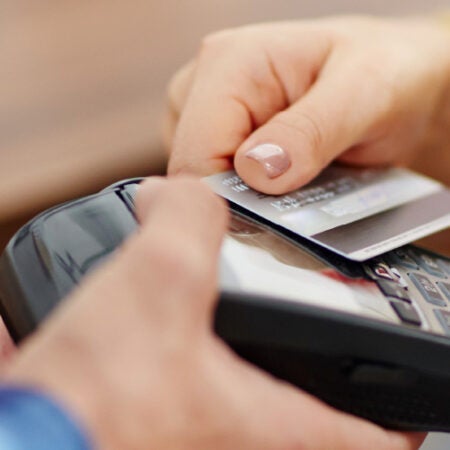
Disclosure regarding our editorial content standards.
Credit card issuers use your credit score to determine whether they give you credit, how much credit you have access to and your terms, such as the interest rate and fees. If you have great credit, you can qualify for much lower interest rates—sometimes even 0 percent—and you may get better benefits from your card.
But those with bad credit—usually defined as below 670 on the FICO model—have fewer options, typically with worse terms.
However, there are still some decent options that can help you get access to credit now and build your personal credit over time. Learn how to get a credit card with bad credit and what kind of cards and terms to look for.
Can I still get a credit card if I have bad credit?
It’s still possible to get a credit card if you have bad credit. There are several options out there, such as the secured and retail cards covered below, but they’ll likely have higher interest rates or more fees. This is because the lender sees you as a higher risk and ups the interest rate or fees to compensate. But even if you qualify for a card with less-desirable terms, this can still be a good option because it allows you to build up your credit so you can eventually get a better card.
This is also true if you have no credit instead of bad credit. Lenders want to see a solid credit history over time, so starting with a less appealing card can still open the door for better options later on.
What kinds of cards are good for those with bad credit?
The best kind of credit card for someone with bad credit is the kind of card they can qualify for and that they can manage responsibly. For those with no credit, this will likely mean a secured credit card, but those with fair credit, such as in the 600 range, may be able to qualify for subprime or retail credit cards.
Below you’ll find an overview of each of these cards and the pros and cons to keep in mind.
Secured cards
A secured credit card is one of the most popular options for those with no or very poor credit. With these, you use a deposit to set your credit limit and the lender can then use that deposit to get their money back if you don’t make your payments.
This means the risk to the lender is very low, which is why they’re willing to give these cards to those with no or a very poor credit history.
Pros: You can build up credit over time to qualify for better terms or a different card.
Cons: Your credit limit on these cards is usually very low, such as just a couple hundred dollars. Plus, interest rates and fees can be high. You’ll also want to make sure the card is being reported to the major credit bureaus. Otherwise, it’s not doing anything to help your credit.
Subprime cards
Subprime credit cards are traditional credit cards, but the terms aren’t as good as prime cards. This could mean the interest rate is higher, the annual fees are higher or the credit limits are lower.
Pros: Subprime cards are reported to the credit bureaus and help you build your credit history. They may also have more options such as balance transfers.
Cons: You’ll likely end up paying high interest rates if you don’t pay your balance off every month. There may also be substantial annual fees you’ll pay for the privilege of using the cards.
Retail cards
Retail credit cards are cards that are tied directly to an individual retail store, such as Kohl’s or Target. In some cases, the store offers a traditional retail card as well as a full credit card option. The difference here is that with a traditional retail card, you can only use it at the store that issued it.
Pros: Retail cards are usually reported to the credit bureaus and can help you build credit. Only being able to use it at a specific store can help you better manage your spending, and you may get special access to sales and coupons.
Cons: You can only use it at that specific store, which may mean you don’t build credit as quickly if it’s not somewhere you’re shopping on a regular basis. There may also be high interest rates to watch out for if you carry a balance.
Tips for getting a credit card with bad credit
When you’re wondering how to get a credit card with bad credit, there are some specific steps you can follow.
1. Check your credit
Knowing what your credit situation is can help you get a more realistic idea of what kind of credit card you can qualify for. It’s a good idea to check your credit report for accuracy and to see what negative items are there that you want to start dealing with to increase your credit. It can also help to know what your credit score is.
This isn’t released as part of your free annual credit reports, so you’ll need to pay for it or see if you can get access through another financial service or website.
2. Shop around
All credit cards aren’t created equal, and even if you’re dealing with bad credit, it doesn’t mean you should go with the first card you find. Compare all the cards you’re in the qualifying range for and review the fees, interest rates, limits and other terms to find the best option for you.
Pay special attention to the stated APR and whether that’s an introductory rate, as well as upgrade options and whether the card history will be reported to the credit bureaus.
3. Work on improving your credit
While it won’t help you get a credit card right now, building your credit over time can help you qualify for a better card later on—and it may not take as long as you think. Payment history and credit utilization are the two main factors to work on because they make up most of your credit score.
So, always make sure you’re paying your payments on time, and try to pay your balance off every month to keep your utilization low.
You’ll also want to be careful not to apply for too many cards or other types of credit at once. Too many hard inquiries can bring your credit score down quickly. If your credit is in really bad shape and you’re not sure where to start, consider working with a credit repair service like CreditRepair.com.
Decide on a game plan for your credit cards
Once you get approved for a credit card, remember that how you use that shiny new piece of plastic plays a big role in what your credit will look like a year from now. Learning to use credit responsibly and building your credit slowly over time is the best way to keep your finances secure now and get yourself in a better position in the future.





